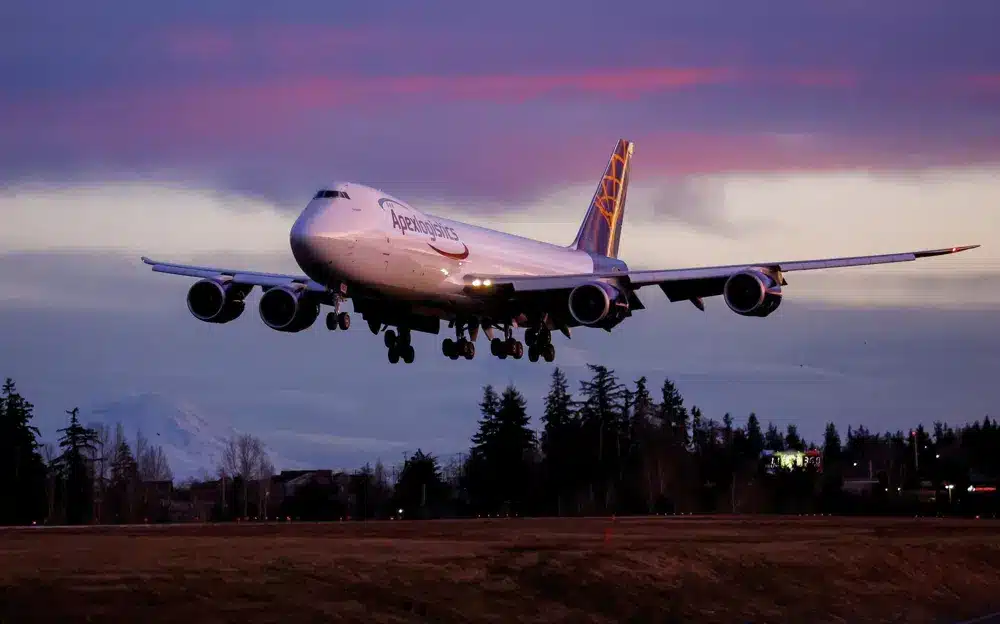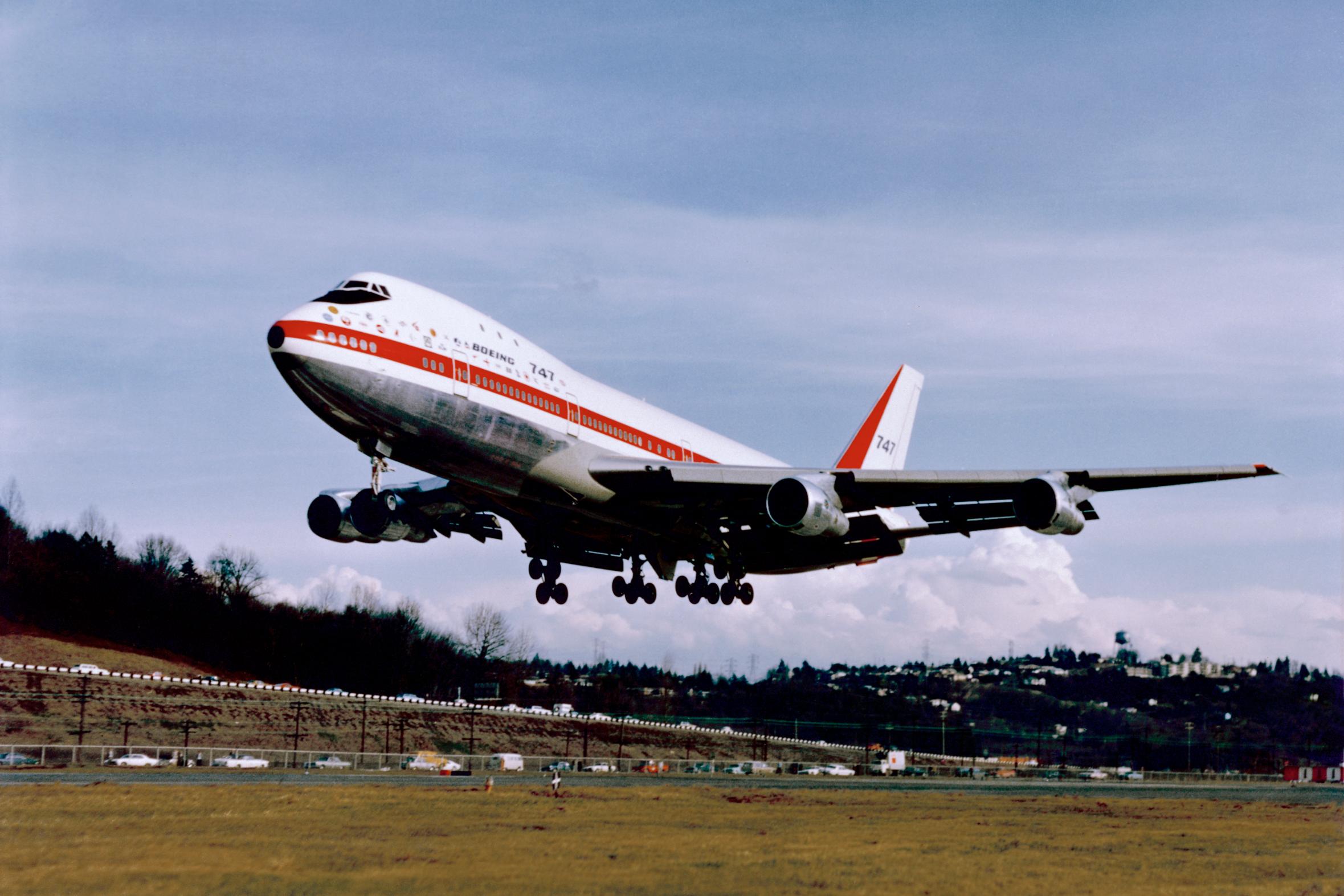Tech
Boeing Bids Farewell To An Icon, Delivers Last 747 Jumbo Jet

SEATTLE, Wash. — On Tuesday, Boeing said goodbye to an icon by delivering its final 747 jumbo jets in front of thousands of workers who helped build the planes over the past 55 years.
The giant yet graceful 747 has served as a cargo plane, a commercial aircraft capable of carrying nearly 500 passengers, a transport for NASA’s space shuttles, and the Air Force One presidential aircraft since its first flight in 1969. It transformed travel by connecting previously unconnected international cities and democratizing passenger flight.
However, over the last 15 years, Boeing and its European rival Airbus have introduced more profitable and fuel-efficient widebody planes with only two engines to maintain, as opposed to the 747′s four. The final plane is the 1,574th built by Boeing in Washington state’s Puget Sound region.
Thousands of workers joined Boeing and other industry executives from around the world — as well as actor and pilot John Travolta, who has flown 747s — Tuesday for a ceremony Boeing marking the delivery of the last 747 to cargo carrier Atlas Air at the company’s massive factory north of Seattle.
“If you love this business, you’ve been dreading this moment,” said Richard Aboulafia, a longtime aviation analyst. “Nobody wants a four-engine airliner anymore, but that doesn’t diminish the aircraft’s enormous contribution to the development of the industry or its remarkable legacy.”
More Than 50,000 Boeing Employees Worked On The Contract
After losing a massive military transport contract, the C-5A, Boeing set out to build the 747. The plan was to use the new engines developed for the transport — high-bypass turbofan engines that burned less fuel by passing air around the engine core, allowing for a longer flight range — for a newly imagined civilian aircraft.
More than 50,000 Boeing employees worked for less than 16 months to build the first 747, a Herculean effort that earned them the moniker “The Incredibles.” The construction of a massive factory in Everett, north of Seattle, required the construction of the world’s largest building by volume. The factory had yet to be finished when the first planes were completed.
Desi Evans, 92, was among those in attendance. He joined Boeing in 1957 at its factory in Renton, south of Seattle, and worked for the company for 38 years before retiring. His boss informed him in 1967 that he would join the 747 programs in Everett the following morning.
“They told me to wear rubber boots, a hard hat, and warm clothing because it’s a sea of mud,” Evans recalled. “And they were preparing for the factory’s construction.”
State Of The Art Technology
As a supervisor, he was in charge of figuring out how the passenger cabins would be put together. He also oversaw the crews that worked on sealing and painting the planes.
“It was an incredible time when that very first 747 rolled out,” he said as he stood in front of the last plane parked outside the factory. “You felt ecstatic as if you were making history. You’re a part of something big, and it’s still big even if this is the final installment.”
The plane’s fuselage measured 225 feet (68.5 meters), and the tail was as tall as a six-story building. The plane’s design included a second deck very important extending from the cockpit back over the first third of the plane, giving it a distinctive hump and inspiring a nickname, the Whale. The 747 was dubbed the “Queen of the Skies” in a more romantic sense.
Some airlines converted the second deck into a first-class cocktail lounge, and even the lower deck featured lounges or even a piano bar on occasion. One decommissioned 747, built-in 1976 for Singapore Airlines, has been converted into a 33-room hotel near Stockholm’s airport.
“It was the first big carrier, the first widebody, so it set a new standard for airlines to figure out what to do with it and how to fill it,” said Guillaume de Syon, an aviation Boeing and mobility expert at Pennsylvania’s Albright College. “It became the essence of mass air travel: You couldn’t fill it with people paying full price, so you need to lower prices to get people onboard. It contributed to the deregulation of air travel that occurred in the late 1970s.”
The first 747 entered service on Pan Am’s New York-London route in 1970, and its timing was terrible, according to Aboulafia. It debuted shortly before the 1973 oil crisis, during a recession that saw Boeing’s employment fall from 100,800 in 1967 to 38,690 in April 1971. The infamous “Boeing bust” was commemorated by a billboard near Seattle-Tacoma International Airport that read, “Will the last person leaving SEATTLE — Turn out the lights?”
Delta Was The Last To Use 747 For Flights
The 747-400 series, an updated model, arrived in the late 1980s and had much better timing, coinciding with the Asian economic boom of the early 1990s, according to Aboulafia. He remembered flying from Los Angeles to Hong Kong on a Cathay Pacific 747 as a twentysomething backpacker in 1991.
“Even people like me could travel to Asia,” Aboulafia explained. “Previously, you had to stop for fuel in Alaska or Hawaii, which was much more expensive. This was a no-brainer — and reasonably priced.”
Delta was the last U.S. airline to use the 747 for passenger flights, which ended in 2017, though some international carriers, including Lufthansa, continue to use it.
Carsten Spohr, CEO of Lufthansa, recalled flying in a 747 as a young exchange student and said that when he realized he’d be traveling to the West Coast of the United States for the event on Tuesday, there was only one way to go: first-class in the nose of a Lufthansa 747 from Frankfurt to San Francisco. He assured the audience that Lufthansa would continue to fly the 747 for many years.
“We just adore the airplane,” he explained.
Atlas Air ordered four 747-8 freighters early last year, with the final one decorated with an image of Joe Sutter, the engineer who oversaw the original design team for the 747, arriving on Tuesday. Atlas CEO John Dietrich referred to the 747 as the greatest air freighter, owing to its unique ability to load through the nose cone.
SOURCE – (AP)






































